Last Updated on March 4, 2025
Interested in getting to know the medicinal plant ground ivy, aka creeping charlie, aka gill-over-the-ground? Learn about this underrated edible and medicinal wild plant and how to tell creeping Charlie look alikes (some of which are also edible and medicinal) from the real deal, Glechoma hederacea, more commonly known as the rampant garden weed creeping Charlie.
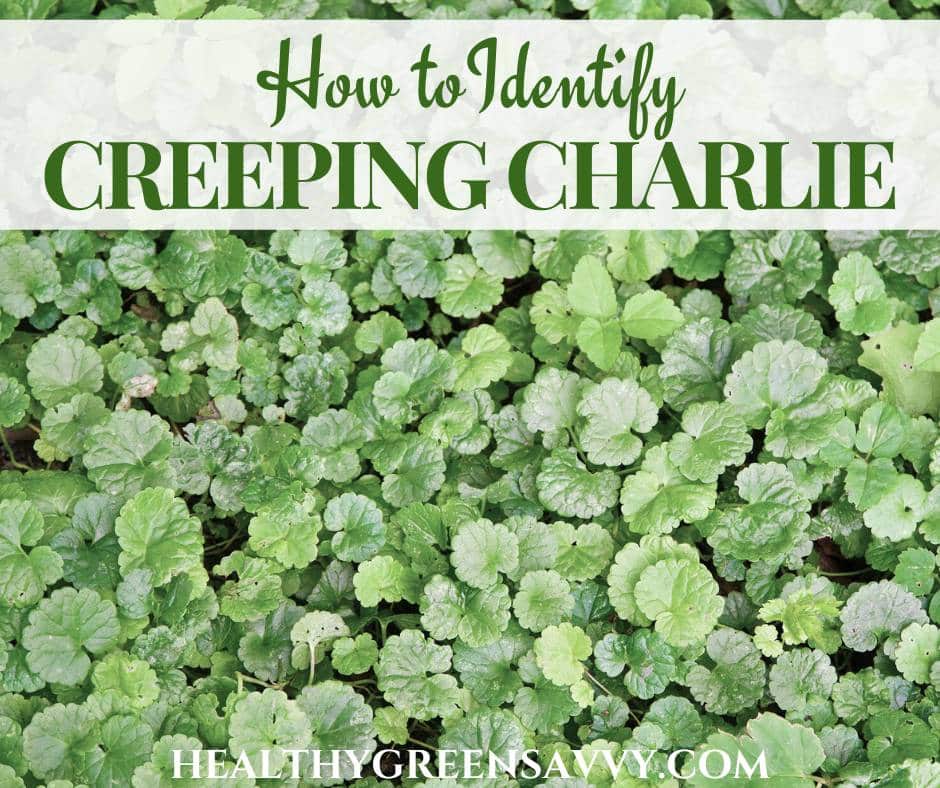
Incidentally, those in the know about this intriguing plant’s medicinal properties tend to call it ground ivy, so I’m going to use both its most common names for variety’s sake.
WHY TO LEARN ABOUT CREEPING CHARLIE LOOK ALIKES
I assume you’ve landed here because you’ve heard creeping Charlie is edible and want to make sure you’ve got the right plant.
Smart move. Always be sure you’ve positively identified any plant you intend to forage, even the common edible weeds you’ll find growing in your garden. In this case, creeping Charlie doesn’t have any look alikes that could do you much harm. In fact, some of these creeping Charlie look alikes are also edible and may be worth trying out.
Once you’re certain what creeping Charlie looks like, get to know these medicinal uses for ground ivy, and you’ll never look at it the same way again. Though most people consider creeping Charlie an annoying weed, when you learn more about it, you’ll come to view it as one of many valuable wild herbs to seek out each season.
The first rule of foraging is to always consult a good field guide to positively identify the plant you seek. Interestingly, you’ll find most foraging guides — even those that include hundreds upon hundreds of plants — that don’t mention this valuable wild plant.
Here are some of the best foraging books I’ve found, full of detailed information on foraging and using loads more edible and medicinal wild plants.
GROUND IVY IDENTIFICATION VS. CREEPING CHARLIE LOOK ALIKES
WHAT DOES CREEPING CHARLIE LOOK LIKE?
First, let’s get clear what ground ivy / creeping Charlie looks like. Whenever you identify a plant, you look at ALL its features, not just one: Pay attention to growth habit, leaf shape and arrangement, flowers, and so on.
GROWTH HABIT
Creeping Charlie got its name in part from its creeping growth habit. (Sorry, I haven’t found anything about how the Charlie part of the name came about!) It spreads by runners, creating dense mats that tend to stay low to the ground. In richer soils, creeping Charlie will sometimes develop taller shoots or jump into raised beds.
It tolerates all sorts of soil and light conditions and often thrives where nothing else can.
A member of the mint family, creeping Charlie has the signature square stem that mints share. Stems are covered with fine hairs.
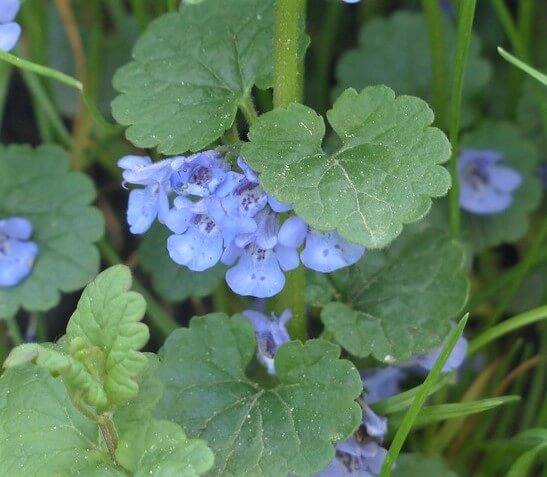
LEAVES
Ground ivy has dark green leaves with scalloped edges that grow in a heart or kidney shape. Creeping Charlie leaves are typically 1 to 2 inches across and are often shiny. They’re covered with fine hairs and grow in opposite pairs along the stem.
FLOWERS
Ground ivy’s flowers are small (about 1/4 to 1/2 inch long) and trumpet-shaped, with an appealing purple-blue color. They tend to grow in clusters of 2 to 6 where leaves emerge.
FRUIT
Ground ivy’s flowers eventually produce large green ball-shaped seed pods, each with 4 seeds. I have never seen any information on the edibility of its seeds or pods.
According to herbalist Maud Grieve, if ground ivy leaves are infected by the Cynips glechomae wasp furry galls can form in autumn. She reports that they “have a strong flavour of the plant and are sometimes eaten by the peasantry of France.” Let me know if you’ve tried them!
CREEPING CHARLIE LOOK ALIKES TO KNOW
The good news is that creeping Charlie doesn’t have any poisonous look alikes, and in fact some of the plants that resemble ground ivy are worth foraging in their own right. Two that people often mistake for creeping Charlie, henbit and purple dead nettle, don’t grow in my area, so I refer you to this useful comparison of the three plants. More details on these and other creeping Charlie look alikes below.
HENBIT
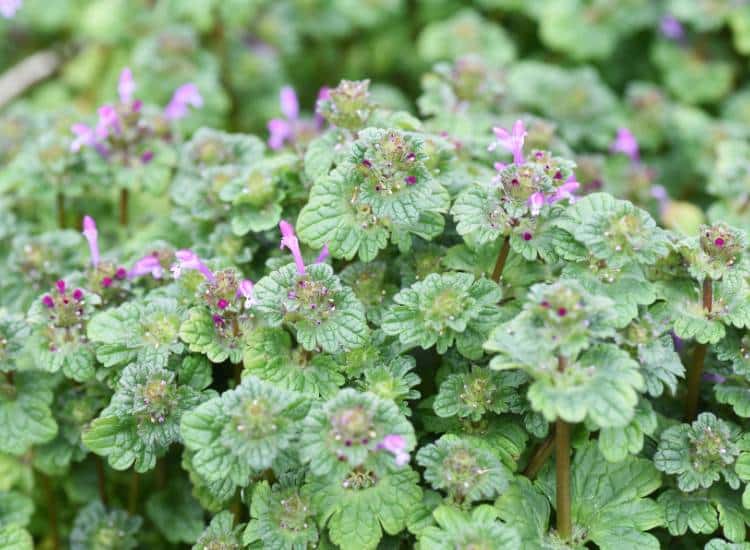
Henbit (Lamium amplexicaule) is often considered a creeping Charlie look alike. Another member of the mint family, henbit grows low to the ground and has scalloped leaves.
To distinguish henbit from creeping Charlie, pay attention to the leaves, which don’t have a petiole that attaches them to the main stem. Henbit leaves grow around the stem and have more deeply-scalloped edges than creeping Charlie. Henbit leaves are hairless and glossy while creeping Charlie leaves have fine hairs.
Reportedly a mild-tasting wild green, henbit can be eaten fresh or cooked and has been used as a medicinal herb.
PURPLE DEAD NETTLE
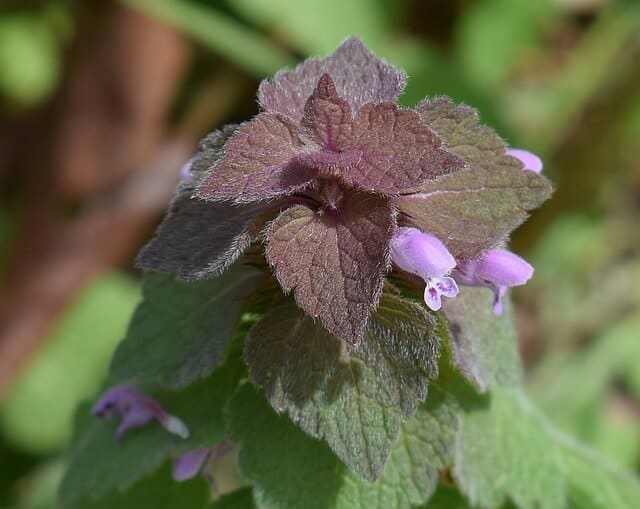
A plant sometimes confused with creeping Charlie is purple dead nettle (Lamium purpureum), another member of the mint family with the square stems we associate with mints. Unlike creeping Charlie, purple dead nettle (sometimes also called red deadnettle) grows in an upright form with more pointed, less serrated leaves that look like many other common mints. Leaves at the top of the plant typically have a purplish hue.
Purple dead nettle is also edible and medicinal, so if you come across it, go ahead and harvest some. The leaves are fuzzy, though, and work better cooked than eaten raw.
It can also be made into tea or tincture that’s thought helpful for addressing seasonal allergies.
PENNYWORT / DOLLARWEED
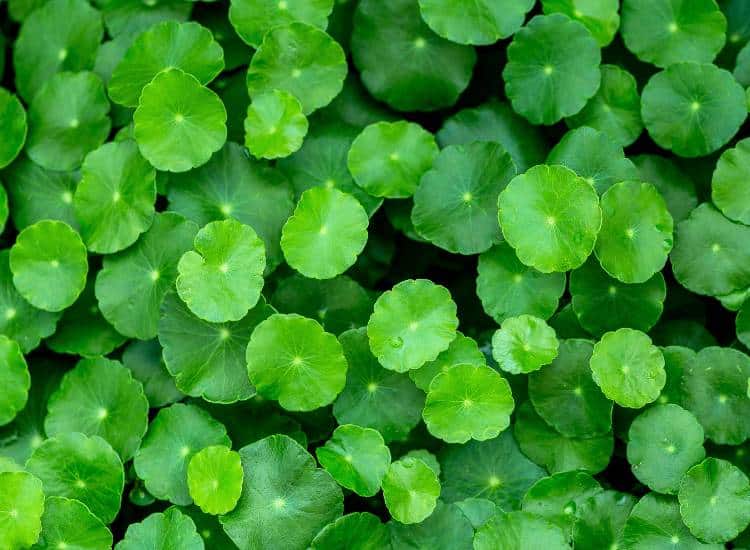
There are different plants called pennywort in different parts of the world, and some look like creeping Charlie more than others. In the eastern half of North America, you might come across American water pennywort. Here’s more on other plants called pennywort.
Some pennyworts share some characteristics with creeping Charlie. They tend to have a creeping habit and leaves with scalloped edges. American water pennywort is round rather than kidney-shaped, though other pennyworts have leaves shaped more like creeping Charlie.
Pennyworts will not have the strong, somewhat minty scent that creeping Charlie will, so if you’re unsure, tearing a leaf and sniffing should help you decide.
Like many other creeping Charlie look alikes, some pennyworts are edible and medicinal. You can find out more about identifying and using pennywort here and here.
GARLIC MUSTARD
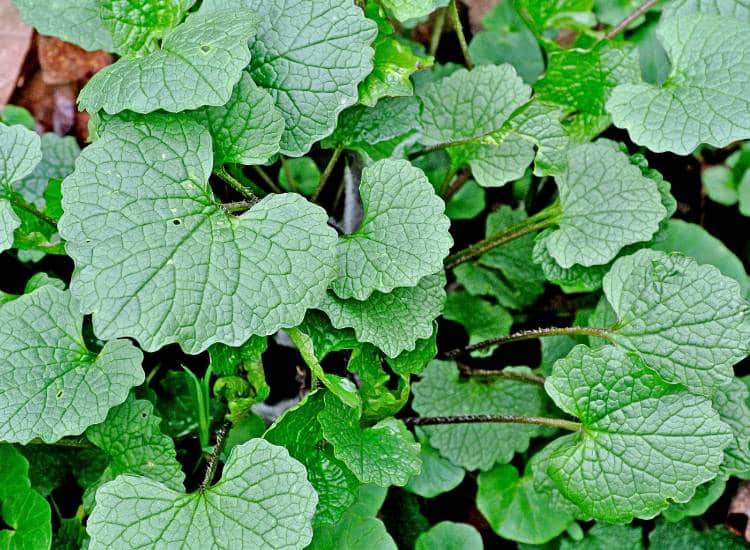
Though the upper leaves of garlic mustard are pointed and don’t look at all like creeping Charlie leaves, the lower leaves and those on first-year plants do. To easily tell them apart, tear a leaf and give it a sniff. Smells like garlic? You’ve got garlic mustard, in which case you should pull up as much as you can, as it’s terribly invasive. Use the stems and upper leaves of taller plants in some tasty garlic mustard recipes.
Tear a leaf of creeping Charlie, on the other hand, and you’ll smell its signature sharp scent rather than garlic.
COMMON MALLOW
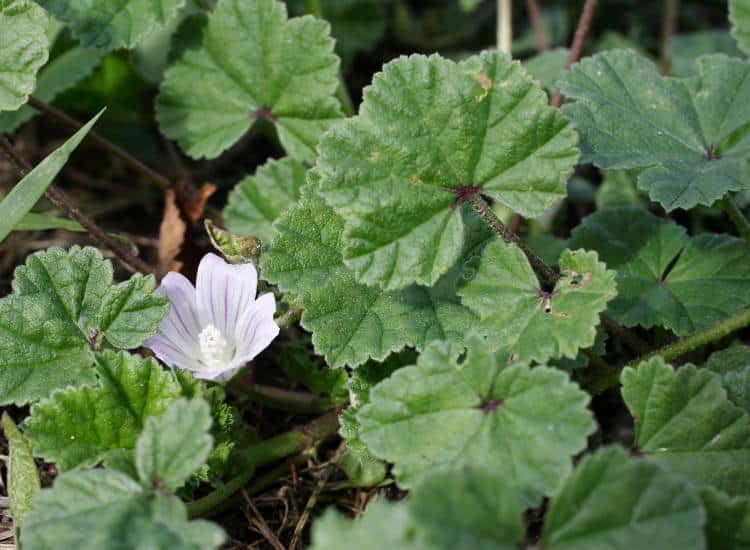
I don’t think common mallow (Malva neglecta) looks much like creeping Charlie, but apparently some folks have confused these two common weeds. Mallow leaves are larger than creeping Charile and have a different shape, as do the flowers. Mallow leaves will not emit a scent when torn.
Mallow leaves are edible, and in fact are prized as a cooking green in the Mediterranean. The seedpods they produce are also considered a tasty snack. They resemble small cheese wheels, which explains mallows’ other name, cheese plant. You’ll find a good photo of them here.
PERSIAN SPEEDWELL
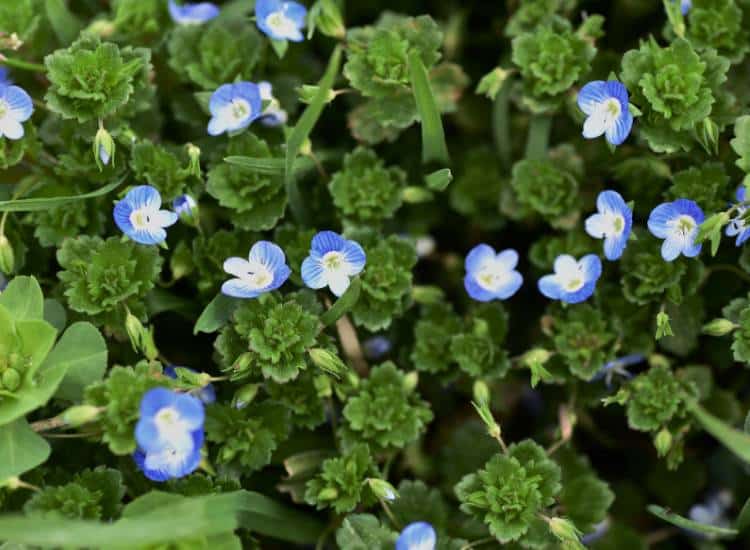
Persian speedwell bears only a passing resemblance to creeping Charlie. Look at the shape of the flowers and leaves and you’ll have no trouble telling them apart. This post has a thorough description and good photos if you’re curious.
Sources disagree on Persian speedwell’s edibility, but it has been used medicinally.
PONYFOOT
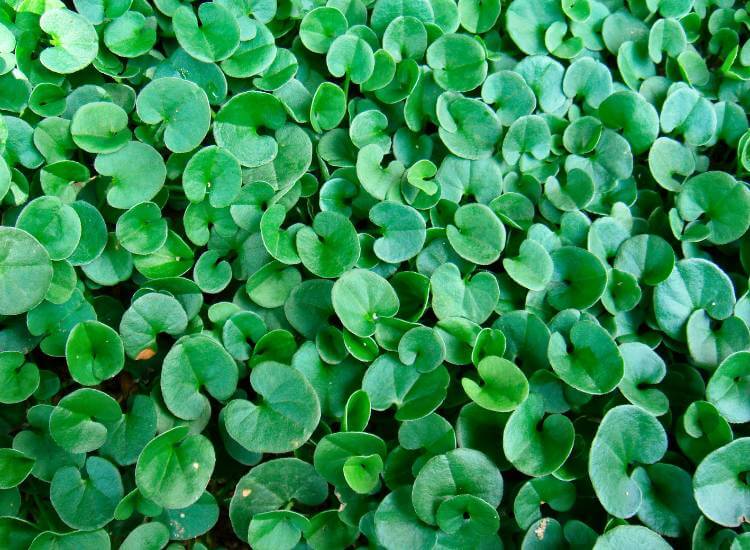
A creeping groundcover sometimes grown as a grass alternative, ponyfoot (Dichondra repens or carolinensis) doesn’t look much like creeping Charlie, besides its creeping habit and kidney-shaped leaves. Leaves have smooth edges and are hairless, while flowers are white rather than violet.
Eat the Weeds reports that ponyfoot is a mild edible green, though other sources have called it bland. It has also been used medicinally.
Now that you know how to tell creeping Charlie from its look alikes, you can go out and harvest yourself some and experiment with palatable ways to use it. Try a vinegar, a tincture, and a tea. Go easy adding ground ivy to cooking, as the flavor can be somewhat overpowering.
Wherever you collect your creeping Charlie, be sure it’s from somewhere that hasn’t been treated with pesticides. Ground ivy may take up heavy metals like lead or arsenic, so it’s important you don’t harvest it from contaminated soils.
Want to learn more about common wild plants you could be eating or using medicinally? Be sure to check these out:
- Uses for dandelions
- Goldenrod identification
- Hackberry fruit
- How to identify purslane (+ purslane recipes)
- Edible mulberries & mulberry leaf tea
Find loads more in our foraging archives!
Save this info on creeping Charlie look alikes and ground ivy identification for later!
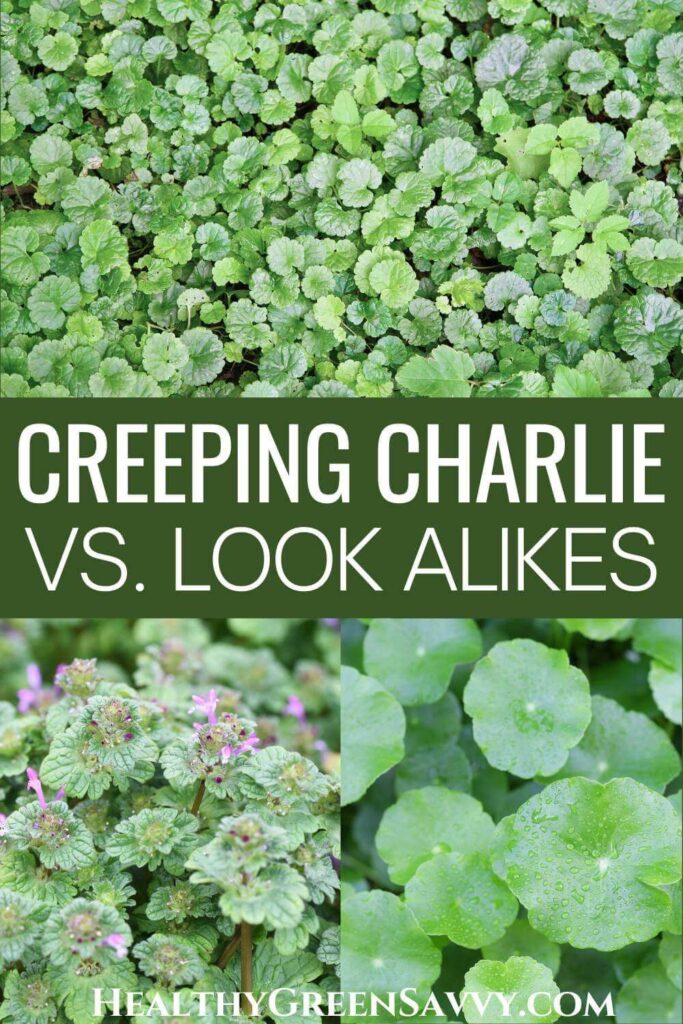
Creeping Charlie look alikes photo credits: Siggy Nowak (cover), Siggy Nowak, undefined undefined, paladin13 (pin)
Disclaimers: Though HealthyGreenSavvy and EcoSavvy Writing LLC always aim to provide thorough and accurate information, we assume no liability or responsibility for any consequences, health issues, or symptoms that arise from ingesting or touching any plant described on this website. It is always the reader’s responsibility to ensure accurate plant identification and use multiple reputable sources to confirm. If you have any doubts about the identification of any plant, do not eat it.

Susannah is a proud garden geek and energy nerd who loves healthy food and natural remedies. Her work has appeared in Mother Earth Living, Ensia, Northern Gardener, Sierra, and on numerous websites. Her first book, Everything Elderberry, released in September 2020 and has been a #1 new release in holistic medicine, naturopathy, herb gardening, and other categories. Find out more and grab your copy here.
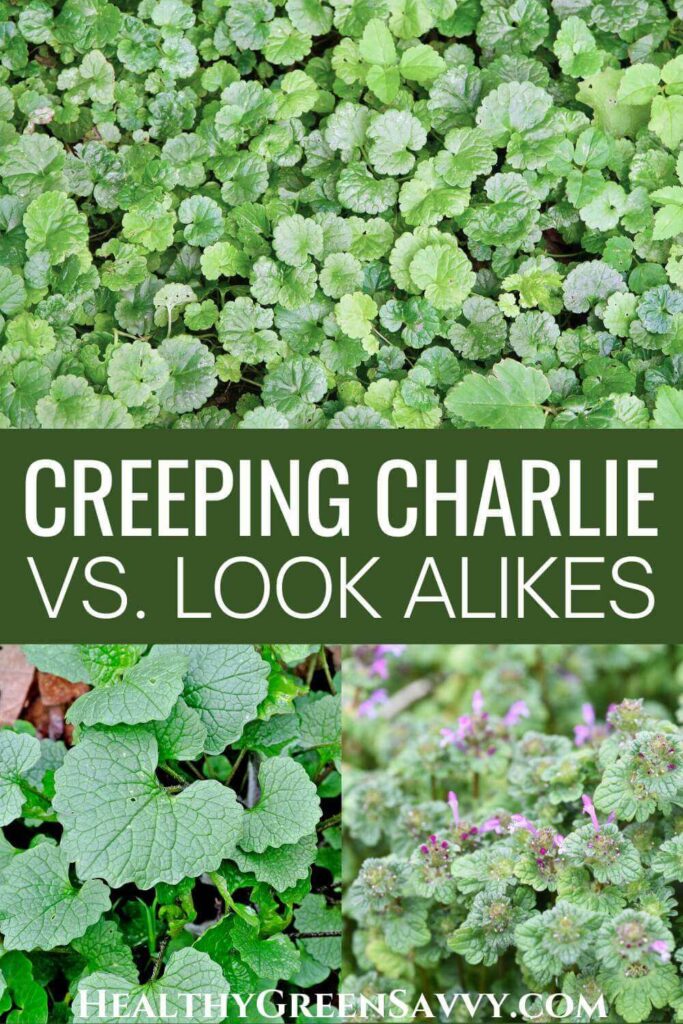


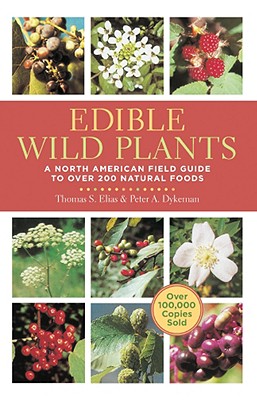
 Hi, I'm Susannah, a garden geek, energy nerd, and fan of healthy food and natural remedies. Need some simple, practical solutions for living healthier and greener? You've come to the right place! More about me and my green projects
Hi, I'm Susannah, a garden geek, energy nerd, and fan of healthy food and natural remedies. Need some simple, practical solutions for living healthier and greener? You've come to the right place! More about me and my green projects